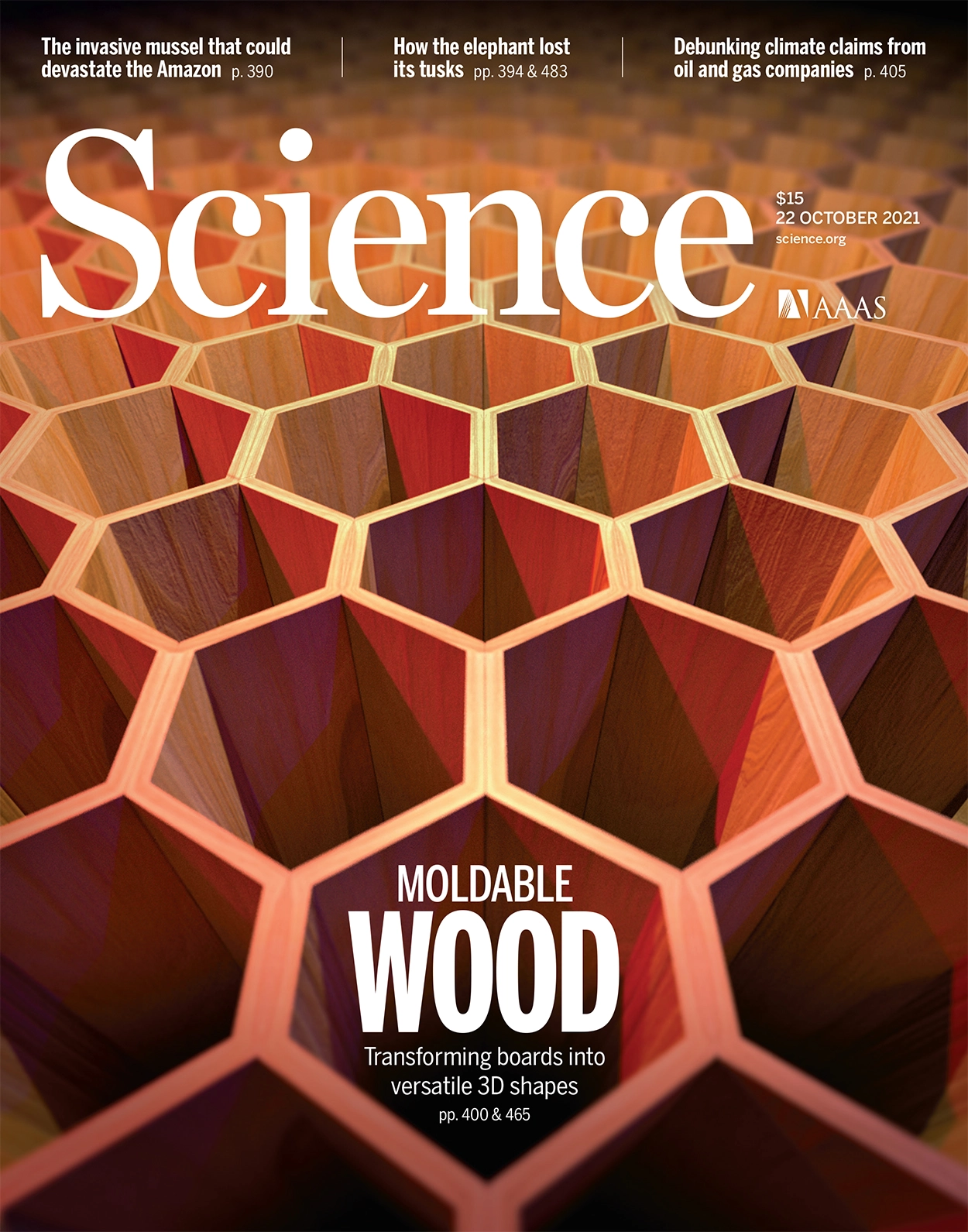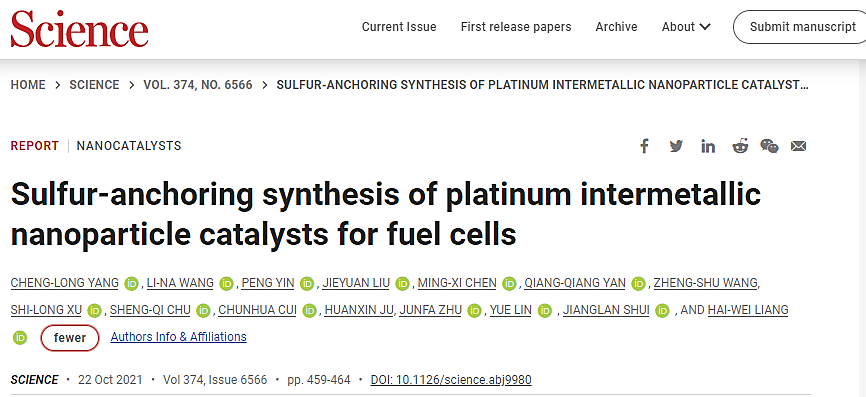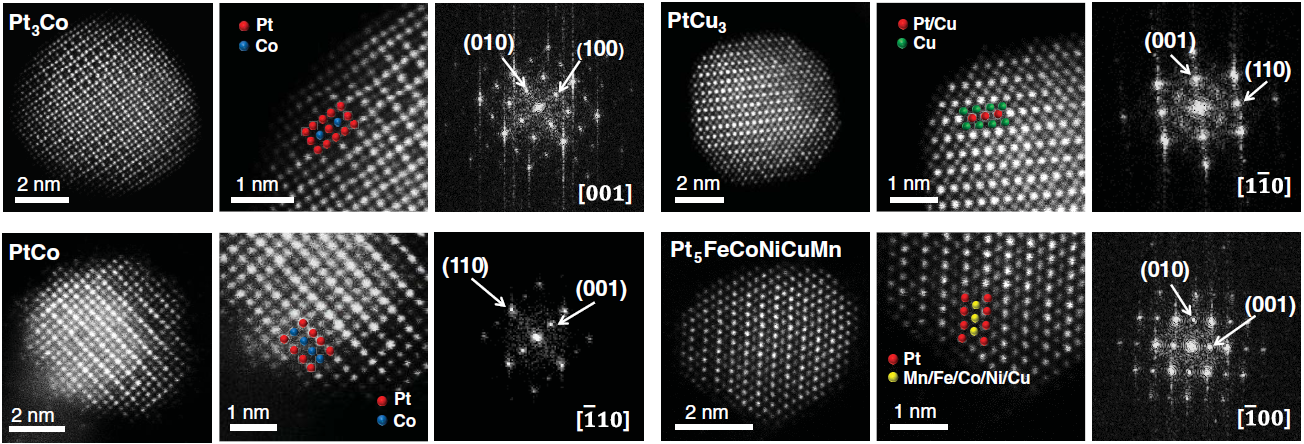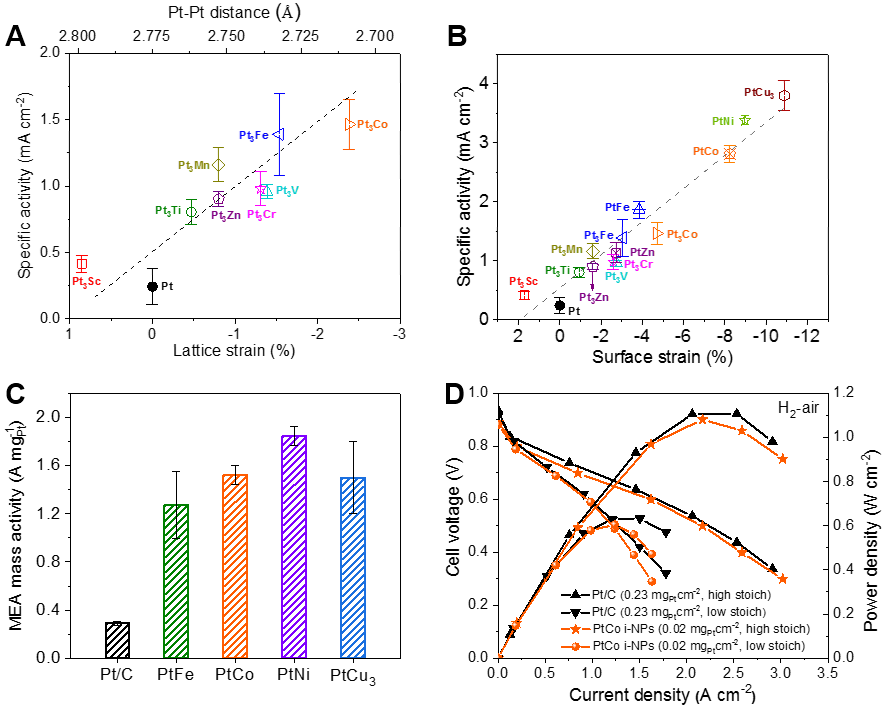On October 22, Science published a report, titled “Sulfur-anchoring synthesis of platinum intermetallic nanoparticle catalysts for fuel cells”, presenting the latest research result of the collaboration between Prof. Shui Jianglan’s research group from Beihang University and Prof. Liang Haiwei’s research group from the University of Science and Technology of China (USTC). Yang Chenglong (Ph.D Student at USTC), Wang Lina (Ph.D Student at Beihang), Yin Peng (Ph.D Student at USTC) and Liu Jieyuan (Ph.D Student at Beihang) are the co-first authors. Prof. Liang Haiwei, Prof. Shui Jianglan and Prof. Lin Yue are the co-corresponding authors.


In the article, the researchers synthesized intermetallic libraries of small nanoparticles consisting of 46 combinations of platinum with 16 other metal elements and used them to study the dependence of electrocatalytic oxygen-reduction reaction activity on alloy composition and platinum skin strain. The research result is expected to further reduce the amount as well as cost of platinum in the proton-exchange membrane fuel cells (PEMFCs).
Pt-based intermetallic compounds (IMCs) belong to a new generation of cathode oxygen reduction catalysts in the field of PEMFCs with high activity and stability, but the high temperatures during the process of preparation often lead to the growth of larger nanoparticles and low platinum utilization. The group at USTC developed a universal methodology for the synthesis of high temperature sulfur confined intermetallic compounds, with which small-size IMCs were produced successfully (Figs. 1 and 2). The group at Beihang used DFT to calculate the adsorption energy of oxygen and observed a monotonic relationship between ORR activity and surface strain rather than the theoretically predicted trend of a volcano relationship (Fig. 3). This study demonstrated the importance of realcatalyst libraries that cannot be replaced by theoretical predictions.

Fig. 1 (A) Schematic illustration showing the kinetic energy barrier for atom ordering in the disorder-to-order transition. (B) Schematic illustration showing the dilemma of simultaneously accelerated sintering kinetics and atom ordering kinetics with temperature. (C) Schematic illustration of the high-temperature sulfur-anchoring synthetic approach.

Fig. 2 Atomic-resolution HAADF-STEM images and FFT patterns of Pt3Co, PtCo, PtCu3, and Pt5FeCoNiCuMn.

Fig. 3 Electrocatalytic performance and structure-activity relationship.
With their rich experience, Prof. Shui’s research group demonstrated the excellent performance of IMCs catalysts in PEMFCs. Several tests have indicated that IMCs catalysts enjoy a bright application prospect.
Additional co-authors of this work include Associate Researcher Chu Shengqi from the Institute of High Energy Physics, Chinese Academy of Sciences, Prof. Zhu Junfa from National Synchrotron Radiation Laboratory, University of Science and Technology of China, and Prof. Chui Chunhuafrom the Institute of Fundamental and Frontier Sciences, University of Electronic Science and Technology of China.
The work was supported by the National Key Research and Development Program of China, the National Natural Science Foundation of China, the Natural Science Foundation of Beijing Municipality, etc.
Link to the article:
https://www.science.org/doi/10.1126/science.abj9980
Webpage of Prof. Shui Jianglan:
http://www.mse.buaa.edu.cn/info/1052/2395.htm
Reported by Liu Shiyuan
Reviewed by Ma Chaoli
Edited by Jia Aiping
Translated by Li Zhuoyang

